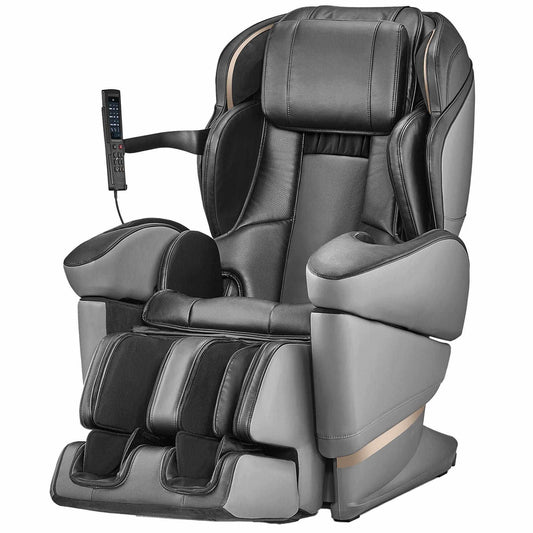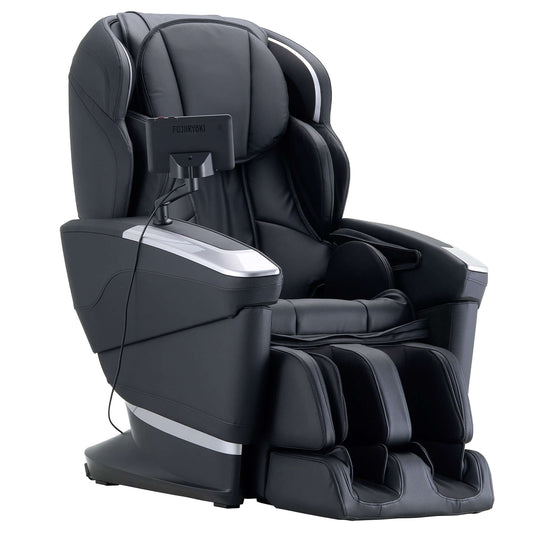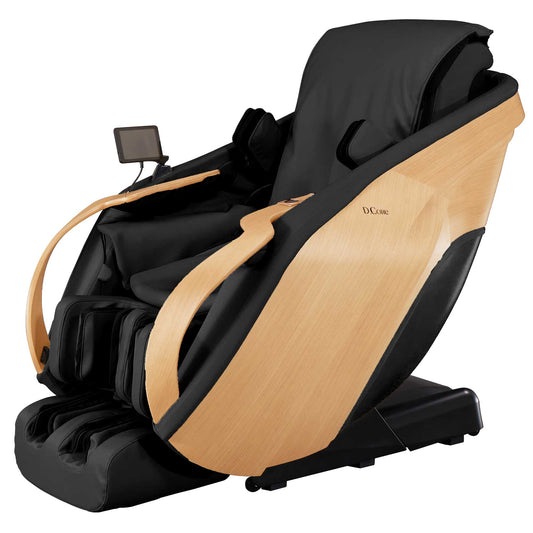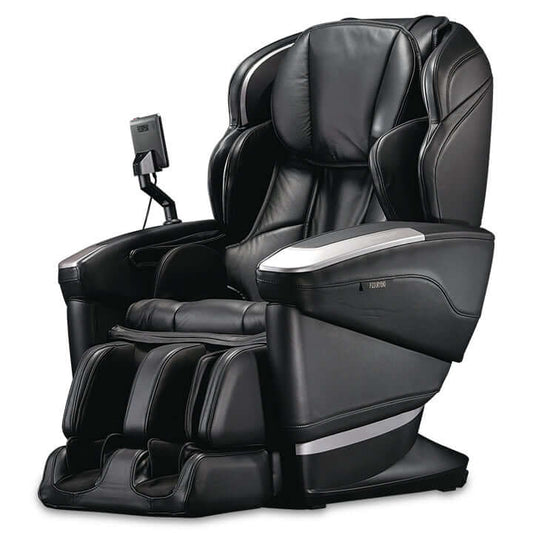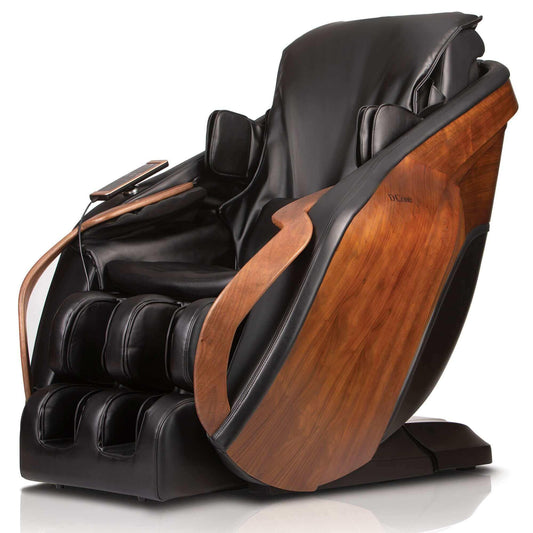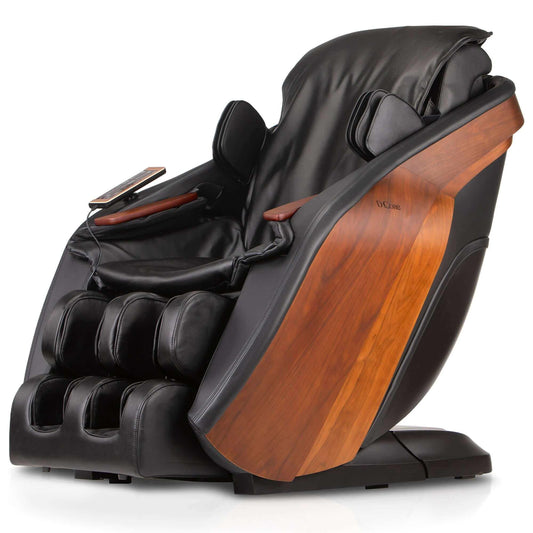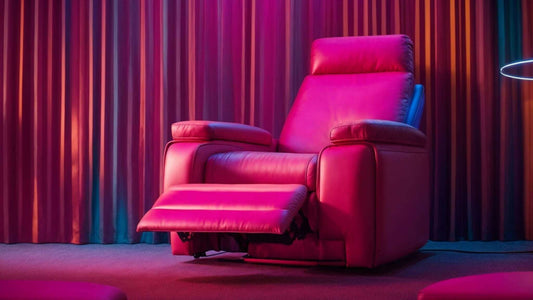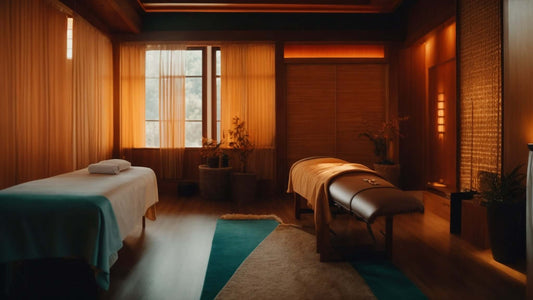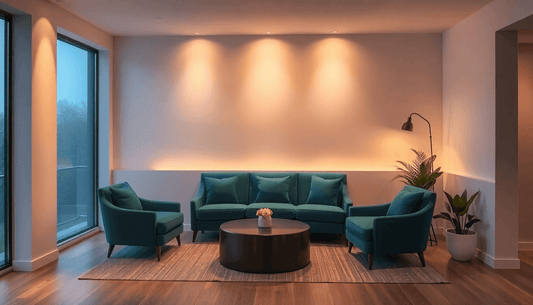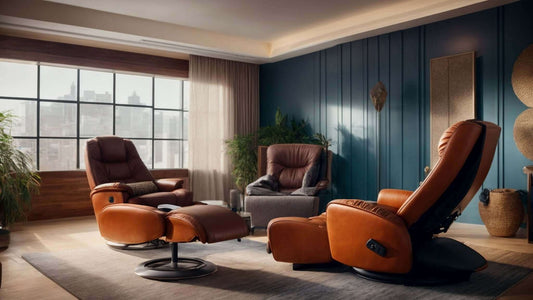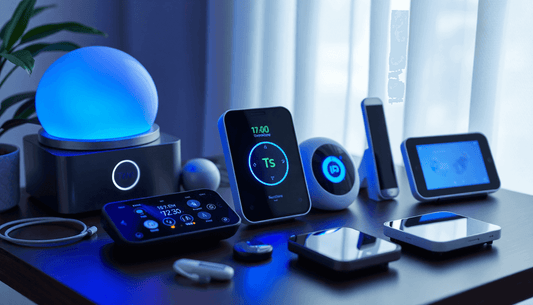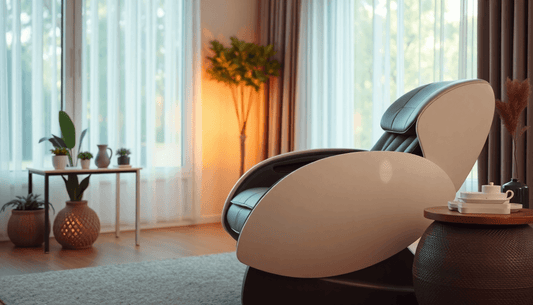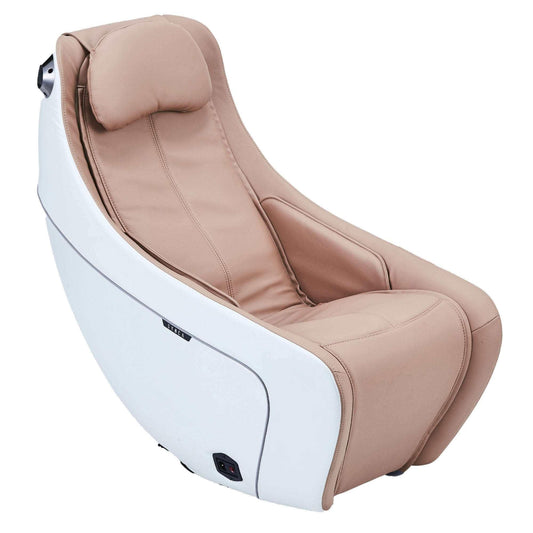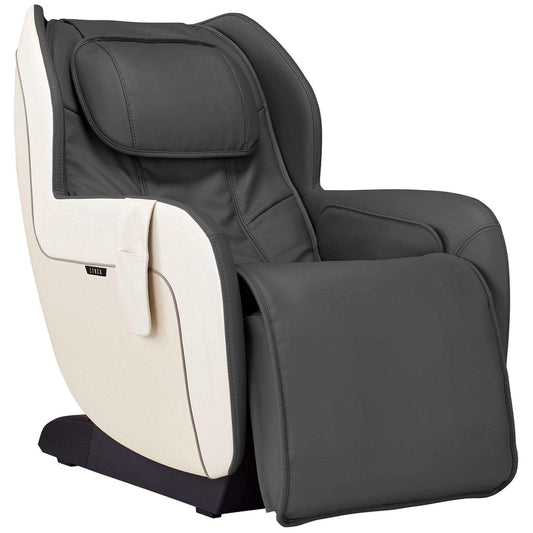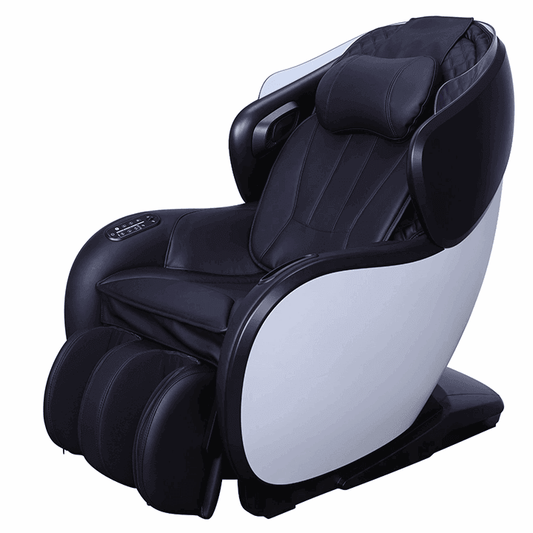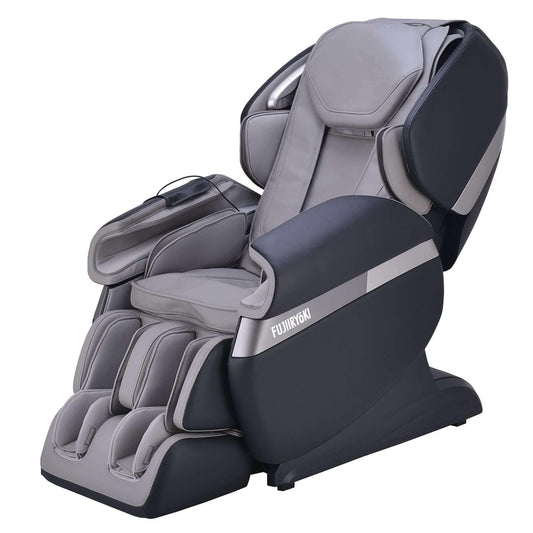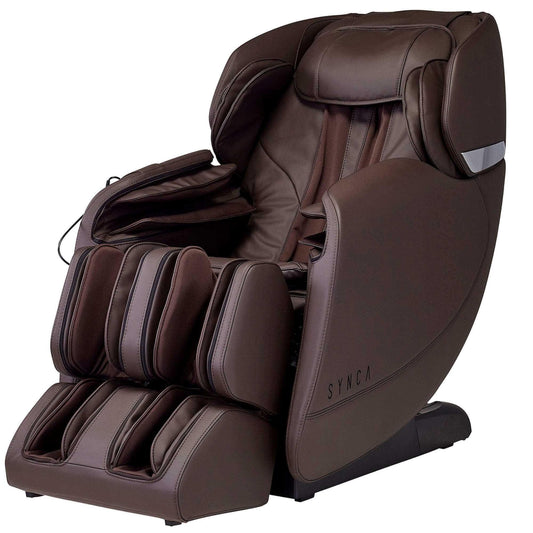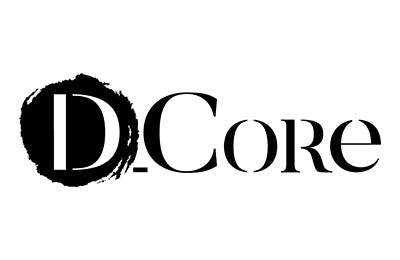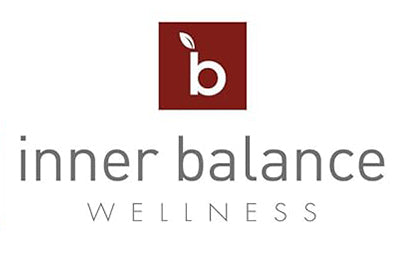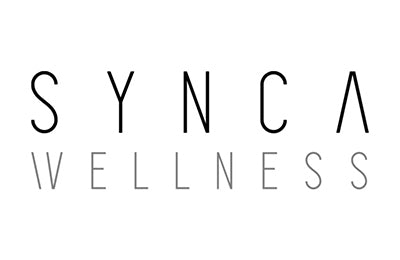
The Science Behind Massage Chairs and Stress Reduction
Here's an overview:
- Introduction: The Importance of Stress Relief in Modern Life
- Understanding Stress: Causes and Consequences
- The Science Behind Massage Therapy
- Benefits of Massage Chairs
- Features to Look for in a Quality Massage Chair
- Comparing Traditional Massage Therapy vs. Massage Chairs
- How Massage Chairs Target Common Stress Points
- User Testimonials: Real-Life Stress Relief Stories
- Integrating Massage Chair Sessions into Your Daily Routine
- Health Benefits Beyond Stress Relief
- Choosing the Right Massage Chair for Your Needs
- Maintenance and Care Tips for Longevity
- Expert Opinions on Massage Chairs for Stress Relief
- Combining Massage Chairs with Other Relaxation Techniques
- Conclusion: Achieving Ultimate Stress Relief with Massage Chairs
Introduction: The Importance of Stress Relief in Modern Life
In our fast-paced, modern lives, stress has become an inescapable component. We often find ourselves juggling multiple roles, whether at work, home, or in social settings. It is essential to recognize the detrimental effects stress can have on our physical and mental well-being. The need for effective stress relief methods is not just a luxury; it is a necessity.
The Ubiquity of Stress
Stress manifests in various aspects of our lives. Here are some of the common sources:
- Work-Related Stress: Tight deadlines, demanding bosses, and long hours.
- Home Life Stress: Family obligations, financial pressures, and household chores.
- Social Stress: Maintaining friendships, social media pressures, and public expectations.
Effects of Stress
Persistent stress isn't just a mental burden; it affects us physically, too. We may experience:
-
Mental Health Issues:
- Anxiety
- Depression
- Irritability
-
Physical Health Problems:
- High blood pressure
- Heart disease
- Gastrointestinal issues
-
Behavioral Changes:
- Overeating or undereating
- Substance abuse
- Sleep disorders
Why Stress Relief Matters
The importance of stress relief cannot be overstated. When we effectively manage stress, we stand to gain numerous benefits, such as:
- Improved Mental Health: Reduced anxiety and a better mood.
- Enhanced Physical Health: Lower risk of heart disease and better immune function.
- Better Quality of Life: More energy, focus, and a more positive outlook.
Traditional vs. Modern Stress Relief Methods
Stress relief has been a part of human culture for centuries. Traditional methods include:
- Meditation: Time-tested technique for calming the mind.
- Exercise: Physical activity to release built-up tension.
- Socializing: Spending quality time with loved ones.
Modern advancements have introduced new methods, combining technology and traditional approaches to create effective stress relief solutions, such as:
- Massage Chairs: Combining technology and therapy to offer quick, effective relief without leaving home.
- Apps and Wearables: Using data to manage stress levels intelligently.
Understanding the value of stress relief methods like massage chairs sets the stage for exploring the science behind their efficacy. This exploration promises to deliver both insights and practical tips for improving our stress management strategies.
Understanding Stress: Causes and Consequences
Stress is a common experience that affects us all. It arises from various sources and has numerous repercussions on our well-being. Understanding the causes and consequences of stress is essential to managing it effectively.
Causes of Stress
Stress originates from multiple sources, often referred to as stressors. These can be categorized into several types:
- Environmental Stressors: These include noise, pollution, and natural disasters. Being in a chaotic or unsafe environment can significantly increase our stress levels.
- Occupational Stressors: Job demands, deadlines, and workplace conflicts are prime examples. Job insecurity and lack of support from colleagues or supervisors also contribute.
- Financial Stressors: Concerns about money, debt, and expenses are major stress inducers. Economic instability adds to these financial pressures.
- Social Stressors: Relationships with family, friends, and partners can be sources of stress. Social expectations and responsibilities also play a role.
- Internal Stressors: Our thoughts, beliefs, and attitudes can create internal stress. Self-criticism, negative self-talk, and unrealistic expectations are common internal stressors.
Consequences of Stress
The effects of stress manifest in various ways, impacting our physical, emotional, and mental health. Some common consequences include:
-
Physical Health Impacts:
- Cardiovascular Issues: Increased heart rate and high blood pressure are linked to chronic stress. Long-term stress can contribute to heart disease.
- Immune System Suppression: Stress weakens our immune system, making us more susceptible to illnesses.
- Digestive Problems: Stress can cause gastrointestinal issues, such as irritable bowel syndrome and stomach ulcers.
-
Emotional and Mental Health Impacts:
- Anxiety and Depression: Chronic stress is strongly associated with anxiety disorders and depression.
- Cognitive Impairments: Stress can impair concentration, memory, and decision-making skills.
- Mood Swings: People under stress often experience irritability, frustration, and mood swings.
Understanding the multifaceted nature of stress helps us recognize its impact and take proactive steps to manage it. In the context of using massage chairs as a stress reduction tool, this knowledge underscores the importance of addressing both the causes and consequences of stress.
The Science Behind Massage Therapy
When we talk about massage therapy, we're referring to a practice rooted in both art and science. Scientific research has shown that massage therapy yields numerous physiological and psychological benefits. These benefits are largely attributed to the body's complex response to tactile stimulation.
How It Works
- Neurological Response: When our skin is stimulated, it sends signals to the brain via the spinal cord. This triggers the release of neurotransmitters like serotonin and dopamine, which boost our mood and create a sense of well-being.
- Circulatory System: Massage improves blood circulation. Better circulation increases the oxygen and nutrient supply to cells while aiding in the removal of waste products from the body. The improved blood flow also helps reduce muscle soreness and tension.
- Musculoskeletal System: Through the manipulation of muscles and soft tissues, massage relieves tension and pain. It also increases the range of motion and flexibility. Our muscles have “knots” or trigger points that can cause discomfort, and massage techniques like deep tissue can help alleviate these.
Psychological Benefits
Stress Reduction
- Cortisol Levels: Regular massage therapy has been shown to lower cortisol levels, which are stress hormones. Elevated cortisol levels can lead to numerous health problems, including hypertension and suppressed immune function.
- Mind-Body Connection: Engaging in regular massage helps strengthen the mind-body connection. This holistic approach ensures that we nurture both our physical and mental health.
Immune System Enhancement
- Lymphatic Flow: Massage stimulates the lymphatic system, aiding in the drainage of toxins and pathogens from the body. This improves immune response.
- White Blood Cells (WBC) Count: Studies have indicated that massage can increase the number of white blood cells, which are critical for combating illnesses.
Hormonal Balance
- Endorphins Release: Massage encourages the release of endorphins, the body’s natural painkillers. This not only reduces pain but also induces a state of euphoria.
- Serotonin and Dopamine: As mentioned earlier, these neurotransmitters are crucial for mood regulation and can help fight conditions like depression and anxiety.
By understanding the science behind massage therapy, we can appreciate how massage chairs can replicate these effects, providing us with a convenient and consistent avenue for stress relief and overall well-being.
Benefits of Massage Chairs
Massage chairs offer numerous benefits, many of which directly contribute to stress reduction and overall well-being. As we explore the advantages, we can see how these innovative pieces of furniture support both physical and mental health.
Physical Benefits
- Muscle Relaxation: Massage chairs target key muscle groups, helping to relax and alleviate tension. This can be particularly beneficial for those of us who suffer from chronic pain or muscle stiffness.
- Improved Circulation: The mechanical motions in massage chairs stimulate blood flow, promoting better circulation. Enhanced circulation helps with the delivery of oxygen and essential nutrients to our tissues and organs.
- Lower Blood Pressure: Regular use of massage chairs can lead to reduced blood pressure. The relaxation induced by the massage can decrease stress-related hormone levels like cortisol, contributing to better heart health.
- Pain Relief: For those experiencing conditions such as back pain or sciatica, massage chairs offer targeted relief. They can help in reducing inflammation and easing discomfort.
Mental and Emotional Benefits
- Stress Reduction: One of the most immediate benefits is a reduction in stress. Massage chairs help in lowering cortisol levels, promoting relaxation, and increasing the production of endorphins—our body's natural “feel-good” chemicals.
- Improved Sleep: By alleviating tension and stress, massage chairs can also improve the quality of our sleep. Better sleep has a cascading effect on our overall health, enhancing mood and cognitive function.
- Enhanced Mood: Regular massages can boost our mood by increasing the levels of serotonin and dopamine in our brain. This can be particularly beneficial for those of us dealing with anxiety or depression.
- Increased Mindfulness: Using a massage chair can serve as a form of meditation. By bringing our focus into the present moment, we can cultivate a sense of mindfulness and calm.
Convenience and Accessibility
- Time Efficiency: Unlike scheduling an appointment with a massage therapist, a massage chair is available for use at any time. This allows us to incorporate relaxation into our daily routine without the hassle of travel or appointments.
- Cost-Effective: Over time, investing in a massage chair can be more cost-effective compared to frequent visits to a massage therapist. The initial investment yields long-term benefits.
- Personal Customization: Modern massage chairs come with a variety of settings and programs. This means we can tailor our massage experience to meet individual needs and preferences, whether we need a deep tissue massage or a gentle relaxation session.
By understanding these benefits, we can appreciate how massage chairs contribute significantly to reducing stress and enhancing well-being.
Features to Look for in a Quality Massage Chair
Choosing the right massage chair involves looking for several key features that enhance comfort, performance, and overall user satisfaction. Let’s examine these features closely.
Massage Techniques Offered
- Some chairs offer a variety of massage techniques like kneading, rolling, tapping, shiatsu, and Swedish massages.
- Advanced models may even simulate human hands for a more realistic experience.
Adjustability and Customization
- Adjustable intensity levels allow us to tailor the massage to our preference.
- Customizable settings for different body areas optimize the massage experience.
- Automatic and manual programs give us flexibility in choosing the massage duration and type.
Body Scanning Technology
- Chairs with body scanning technology can detect our body shape and size.
- This feature ensures the rollers and airbags target the right spots, providing a precise and effective massage.
Heat Therapy
- Integrated heating elements are beneficial for loosening tight muscles.
- Heat can enhance blood circulation, offering a soothing experience and accelerating muscle recovery.
Zero-Gravity Positions
- Some chairs support a zero-gravity recline, reducing spine pressure and improving the massage effectiveness.
- Multiple zero-gravity positions can further enhance relaxation and stress relief.
Airbag Massage System
- Airbags target various parts of our body, such as shoulders, arms, legs, and feet.
- Airbag systems often offer adjustable intensity levels and can synchronize with roller massages for comprehensive relief.
Foot and Calf Massagers
- Robust foot and calf massagers provide relief to tired legs.
- Reflexology features often stimulate pressure points, promoting relaxation.
User-Friendly Interface
- The interface should be intuitive, whether it’s a touchscreen or a remote control.
- Pre-programmed and customizable options save time and allow convenient use.
Durability and Build Quality
- High-quality materials ensure longevity and comfort.
- Sturdy construction often reflects in longer warranty periods and better overall longevity.
Portability and Space Considerations
- Some chairs offer a compact design, suitable for smaller living spaces.
- Wheels or foldable structures make it easier to move the chair if necessary.
Additional Features
- Bluetooth speakers, USB ports, and cup holders can enhance the overall experience.
- Aromatherapy options and LED lighting add to the relaxation environment.
Looking for these features in a massage chair can significantly impact our stress reduction and overall well-being.
Comparing Traditional Massage Therapy vs. Massage Chairs
When we weigh traditional massage therapy against massage chairs, several aspects stand out.
1. Personal Touch and Customization
Traditional massage therapy offers human touch, which can adjust techniques based on immediate feedback. Skilled therapists can identify tension spots and adapt their methods quickly. On the other hand, massage chairs provide programmed settings that aim to replicate these techniques, but lack real-time customization based on feedback.
2. Convenience and Accessibility
Massage chairs score higher in terms of convenience. We can use them at any time without needing to book appointments or travel to a spa. They are ready for use whenever we feel the need. Traditional therapy requires scheduling, traveling, and coordinating with a therapist's availability.
3. Cost Considerations
Initial costs for massage chairs can be high, but over time, they may prove more economical. We usually pay a one-time fee for the chair and avoid ongoing expenses. Traditional massage therapy can become costly with recurring sessions, potentially adding up to significant sums over just a few months.
4. Technique and Range of Motion
A human therapist can perform a wide array of massage techniques, such as deep tissue, Swedish, and reflexology. Massage chairs, while advanced, might offer a limited range of programmed motions and might not achieve the nuanced varieties a trained therapist can provide.
5. Experience and Environment
Traditional massage therapy includes the experience of a calming environment, aromatherapy, and a more personalized atmosphere. We often find the surroundings and the personal attention relaxing. Massage chairs can lack this holistic environment but can still provide a comfortable experience at home.
6. Intensity and Adjustability
While massage chairs often come with multiple intensity settings, traditional therapists have the skill to adjust pressure precisely based on our responses. This adaptability can be crucial for targeting deep muscle tension effectively.
Overall, both methods have their unique advantages and limitations. Deciding between them depends largely on our personal preferences, needs, and priorities.
How Massage Chairs Target Common Stress Points
When it comes to stress reduction, massage chairs focus on key areas of our body where tension tends to accumulate. Understanding how these chairs work can help us appreciate their effectiveness. Here’s how massage chairs target common stress points:
-
Neck and Shoulders
- Tension in the neck and shoulders is often due to poor posture or extended periods of sitting.
- Massage chairs utilize kneading and rolling techniques to relieve tightness in these areas.
- Many models offer adjustable rollers that can be tailored to hit specific points for personalized relief.
-
Lower Back
- Lower back pain is a common issue, often exacerbated by prolonged sitting.
- Our massage chairs are equipped with lumbar support and shiatsu massage functions to alleviate discomfort.
- Heating elements are sometimes incorporated to enhance muscle relaxation in the lower back.
-
Upper Back
- Stress in the upper back can result from long hours at a desk or physical activities that strain the muscles.
- Massage chairs typically use tapping and kneading motions to loosen knots and improve blood flow.
- Advanced chairs offer zero-gravity settings that distribute body weight evenly, reducing strain on the upper back.
-
Legs and Feet
- We know standing or walking for extended periods can lead to leg fatigue and poor circulation.
- Compression massage and airbags in the leg rest area help to alleviate tension and stimulate blood flow.
- Foot rollers are designed to target pressure points, providing relief from plantar fasciitis and general foot pain.
-
Arms and Hands
- Stress and repetitive tasks can lead to tightness in the arms and hands.
- Massage chairs often feature armrests with built-in airbags that apply gentle pressure to soothe tired muscles.
- Some models include hand massagers with a combination of rollers and vibration to reduce stiffness.
-
Buttocks and Hips
- Prolonged sitting can cause tension in the buttocks and hips.
- Our massage chairs use vibrating and kneading mechanisms to release tightness in these areas.
- Adjustable settings allow us to focus on specific points, ensuring comprehensive stress relief.
Understanding these functions allows us to see how massage chairs can effectively target and alleviate stress in common tension areas. By addressing each key point, these chairs provide an encompassing and therapeutic experience that promotes overall well-being.
User Testimonials: Real-Life Stress Relief Stories
We collected various testimonials from users who shared their personal experiences with massage chairs and how these devices have helped them manage stress effectively.
1. Emma, a Working Mother
"Balancing work and family can be overwhelming. My massage chair has become my sanctuary. Each evening, I spend 20 minutes unwinding. The deep-tissue settings are perfect for relieving the tension that builds up throughout the day."
2. Michael, an Office Worker
"Sitting at a desk for long hours has always given me back problems. Since using a massage chair, my back pain has significantly reduced. It's like having a personal therapist at home. I feel more relaxed and can focus better at work."
3. Lisa, a College Student
"College stress is real, especially around exam season. My massage chair helps me remain calm and focused. The various settings allow me to choose exactly what I need, whether it's a quick neck massage or a full-body treatment."
4. John, a Retiree
"After retiring, I wanted to improve my quality of life. A massage chair was the best investment. It helps with my muscular aches and promotes better sleep. It has turned into an essential part of my daily routine."
5. Sarah, a Fitness Enthusiast
"As someone who exercises regularly, muscle soreness is common. The massage chair aids in faster recovery. It targets sore muscles efficiently, making it easier to stick to my workout regimen without prolonged pain."
Common Benefits Highlighted
- Physical Relief: Users consistently report relief from back, neck, and shoulder pain.
- Mental Relaxation: A significant reduction in stress and improved sleep quality.
- Convenience: The ability to enjoy a high-quality massage at home without scheduling appointments.
These testimonials illustrate the diverse ways people incorporate massage chairs into their lives for stress relief.
Integrating Massage Chair Sessions into Your Daily Routine
To maximize the benefits of a massage chair, we should seamlessly integrate its use into our daily routine. The key lies in making massage sessions a non-negotiable part of our day, similar to brushing our teeth or having our morning coffee.
Scheduling Regular Sessions
- Morning Session: Start the day with a short, invigorating massage. This can help wake up the muscles and stimulate blood flow, setting a positive tone for the rest of the day.
- Midday Break: Take a 10-15 minute break during lunch for a quick massage. This can help to alleviate any build-up of stress and refresh our mind for the afternoon’s tasks.
- Evening Session: Conclude the day with a relaxing massage that focuses on relieving the tension accumulated throughout the day, facilitating a smoother transition to relaxation and sleep.
Setting Up the Space
Creating an inviting and tranquil area for our massage chair enhances the overall experience:
- Lighting: Soft, ambient lighting can set a relaxing mood.
- Sound: Incorporate calming music or nature sounds.
- Aromatherapy: Use essential oils like lavender or eucalyptus to heighten relaxation.
Consistency and Commitment
- Daily Routine: Commit to the same time each day for consistency.
- Reminders: Set reminders or alarms to ensure we don’t skip sessions.
- Accountability: Pair up with a friend or family member who also has a massage chair for mutual encouragement.
Customizing Your Massage Experience
- Intensity Levels: Adjust the chair’s intensity based on our stress levels and specific needs.
- Target Areas: Focus on problem areas that typically hold the most tension, such as the neck, shoulders, or lower back.
- Duration: Mix short, frequent sessions with occasional longer sessions for maximum benefit.
Tracking Your Progress
- Journaling: Keep a journal to track how regular massage sessions impact our stress levels and overall well-being.
- Regular Check-ins: Periodically reassess our routine and make adjustments as needed to ensure ongoing benefits.
By thoughtfully integrating massage chair sessions into our daily routine, we can effectively manage stress, improve our mental clarity, and enhance our overall quality of life.
Health Benefits Beyond Stress Relief
When we explore the advantages of massage chairs, it’s clear that their benefits extend far beyond mere stress relief. These chairs offer a wealth of health benefits that can enhance our overall well-being.
Enhanced Circulation
Regular use of massage chairs can greatly improve our blood circulation. The massage movements stimulate blood flow, aiding in the delivery of oxygen and essential nutrients to our muscles and tissues. Improved circulation also helps in the removal of metabolic waste and toxins from our body.
Pain Relief
Massage chairs can be highly effective in relieving various types of pain. Whether we suffer from chronic back pain, stiff neck, or sore muscles, the targeted pressure and kneading action of the chairs can alleviate discomfort. This is particularly beneficial for those with conditions like arthritis or fibromyalgia.
Muscle Relaxation
One of the primary benefits of massage chairs is muscle relaxation. By directly targeting areas of tension, these chairs can help reduce muscle stiffness and spasms. This not only improves our range of motion but also enhances our flexibility.
Improved Posture
Many of us struggle with poor posture due to prolonged sitting, often in front of computers. Massage chairs can aid in correcting these issues by addressing muscle imbalances and promoting spinal alignment. Consistent use can lead to better posture and reduced strain on our spine and muscles.
Better Sleep
Massage chairs can also contribute to better sleep quality. The relaxation induced by a massage session helps lower our cortisol levels and boosts the production of serotonin and melatonin, hormones that are essential for sleep. Using a massage chair before bedtime can prepare our body for restorative sleep.
Immune System Boost
Regular massages can stimulate our lymphatic system, which plays a crucial role in our immune response. By facilitating the flow of lymph fluid, massage chairs help in the removal of harmful pathogens from our body, enhancing our body's ability to fight infections and illness.
Reduced Anxiety and Depression
The therapeutic touch of a massage can influence our emotional well-being. By decreasing cortisol and increasing neurotransmitters like dopamine and serotonin, massage chairs can help reduce symptoms of anxiety and depression. This makes them a valuable tool for mental health support.
Enhanced Athletic Performance
For athletes, massage chairs provide a means of recovery that can improve performance. By reducing muscle fatigue and enhancing flexibility and range of motion, athletes can maintain peak condition and prevent injury.
By incorporating a massage chair into our routine, we can enjoy these extensive health benefits, contributing to a healthier, more balanced lifestyle.
Choosing the Right Massage Chair for Your Needs
When selecting a massage chair, we need to consider several key factors. This helps ensure we make an informed decision that meets our individual needs and offers maximum benefits.
Types of Massage Techniques
Different massage chairs offer various techniques. We should be aware of options such as:
- Shiatsu: Focuses on pressure points, providing deep tissue relief.
- Swedish Massage: Involves long, smooth strokes and is excellent for relaxation.
- Compression Massage: Employs airbags to compress and release muscles, ideal for circulation improvement.
- Rolling Massage: Offers a gentle rolling motion along the spine for soothing tension relief.
Features and Customization
We must look for chairs with adjustable settings to tailor the experience:
- Intensity Levels: Adjustable settings allow us to control the pressure and depth of the massage.
- Heat Therapy: Some chairs include heating elements to enhance muscle relaxation and improve blood flow.
- Body Scanning: Advanced models scan our body to adjust massage rollers and provide a customized massage.
Ergonomics and Design
Comfort and usability are crucial. We recommend considering:
- Fit and Size: Make sure the chair accommodates our body size and preferred seating posture.
- Material: High-quality, durable materials increase the chair's longevity and comfort.
- Space Requirements: Measure the space where the chair will be placed to ensure it fits, including room for reclining.
Budget Considerations
Massage chairs vary significantly in price. We should:
- Set a Budget: Understanding our financial limits helps narrow down options.
- Evaluate Cost vs. Features: Consider chairs that offer the best features within our budget, avoiding unnecessary extras that inflate costs.
- Warranty and Customer Support: Reliable warranties and responsive customer service can save us money and headaches in the long run.
Test and Reviews
Trying out the chair can be invaluable:
- In-Store Testing: If possible, we should visit a showroom and experience different models firsthand.
- Customer Reviews: Online reviews provide insights from other users about the chair's comfort, reliability, and effectiveness.
By taking these factors into account, we can find a massage chair that best suits our needs, combining comfort, efficiency, and value.
Maintenance and Care Tips for Longevity
To ensure long-lasting performance from a massage chair, proper maintenance and care are crucial. By following regular upkeep practices, we can maintain its functionality and keep it in pristine condition.
1. Regular Cleaning
- Dust and Dirt Removal: We should wipe down the chair’s surface with a soft, dry cloth to remove accumulated dust and dirt.
- Leather and Fabric Care: For leather surfaces, use a leather cleaner and conditioner. Fabric upholstery may require a gentle vacuum and spot cleaning with an appropriate cleaner.
2. Mechanical Check-ups
- Inspect Moving Parts: We must routinely check the moving components such as rollers and tracks for any signs of wear or obstruction.
- Lubrication: Apply manufacturer-recommended lubricants to mechanical parts to ensure smooth operation.
3. Electrical Components
- Power Cord and Plug: Examine the power cord and plug for any damage or fraying. Ensure the connection is safe and secure.
- Software Updates: If the chair has an electronic control system, install any available software updates to keep it running smoothly.
4. Proper Usage
- Weight Limits: Adhere to the manufacturer's guidelines regarding weight limits to avoid straining the chair’s mechanical components.
- Operational Cycle: Follow the recommended usage patterns, typically taking breaks between sessions to prevent overheating the motors.
5. Storage Considerations
- Temperature and Humidity: Keep the chair in a controlled environment, away from extreme temperatures and high humidity to prevent damage.
- Protective Cover: Use a dust cover when the chair is not in use to protect it from dust and debris.
6. Proactive Repair
- Service Schedule: Schedule professional maintenance as recommended by the manufacturer to catch any emerging issues early.
- Parts Replacement: Replace any worn-out parts promptly to avoid further damage.
Keeping a massage chair in top working condition requires attention to detail and adherence to the manufacturer's guidelines. Regular maintenance helps us maximize the benefits of the massage chair for stress reduction and overall well-being.
Expert Opinions on Massage Chairs for Stress Relief
We have gathered insights from various experts in the field to understand the effectiveness of massage chairs in reducing stress. Their perspectives highlight both the scientific principles and practical benefits.
Clinical Psychologists
-
Dr. Emily Harper emphasizes the importance of relaxation for mental well-being. She states,
"Massage chairs can facilitate deep relaxation by engaging the parasympathetic nervous system, leading to reduced anxiety levels."
- Dr. James Roberts points out that regular use can foster a consistent state of mental calmness, which is vital for managing chronic stress.
Physiotherapists
-
Mark Stevenson, a certified physiotherapist, highlights the physical benefits intertwined with stress relief. According to him,
"The mechanical massages mimic human touch, which releases endorphins and reduces cortisol levels."
- Rebecca Lee suggests incorporating massage chairs into rehabilitation routines, as they can alleviate muscle tension exacerbated by stress.
Wellness Coaches
-
Sarah Collins, a wellness coach, believes that incorporating a massage chair in daily routines enhances overall well-being.
"Using a massage chair for just 15 minutes daily can significantly improve sleep quality, leading to better stress management."
-
John Mathews goes a step further, advocating for massage chairs in the workplace to combat work-related stress, explaining,
"Quick sessions during breaks can enhance productivity and mental clarity."
Technology Experts
-
Amanda Hill, a tech specialist, emphasizes the advancements in massage chair technology.
"Modern massage chairs offer customizable settings that can target specific stress points, making them a versatile tool for stress relief."
- David Wong mentions the integration of AI and machine learning, predicting user preferences and optimizing massage efficiency.
Holistic Health Practitioners
-
Dr. Olivia Thompson integrates massage chairs within holistic wellness plans.
"These chairs are not just luxury items; they are powerful tools that complement traditional stress-relief methods like aromatherapy and yoga."
-
Michael Green, another practitioner, supports this view, adding,
"They offer a non-invasive, drug-free option for those looking to reduce stress naturally."
The varying perspectives from these experts underscore the multifaceted benefits of massage chairs, affirming their role in stress management and overall health.
Combining Massage Chairs with Other Relaxation Techniques
When we integrate massage chairs with other relaxation techniques, we can amplify the benefits and achieve deeper stress reduction. There are several methods we can combine with massage chair sessions to enhance our overall relaxation experience.
Breathing Exercises
Breathing exercises can complement the mechanical massage. When we practice deep, rhythmic breathing while seated in the massage chair, we help facilitate a state of calm and relaxation. Techniques such as:
- Diaphragmatic Breathing: Inhaling deeply through the nose, allowing the abdomen to rise, and exhaling slowly through the mouth.
- 4-7-8 Breathing: Inhaling for a count of four, holding the breath for seven counts, and exhaling for eight counts.
Aromatherapy
Introducing aromatherapy into our massage sessions can significantly improve the ambiance and elevate the relaxation effect. Essential oils like lavender, chamomile, and eucalyptus can be diffused in the room or applied topically. Adding a few drops to:
- Diffusers: Helps disperse calming scents throughout the space.
- Massage Oils: Enhances the tactile sensations from the chair and promotes relaxation.
Guided Meditation
Combining guided meditation with a massage chair can create a holistic stress reduction experience. We can use apps or audio recordings that:
- Offer Progressive Muscle Relaxation: As the massage chair works on our muscles, we mentally focus on relaxing each muscle group.
- Provide Visualization Techniques: Imagining a peaceful setting while the chair massages can amplify the sense of tranquility.
Music Therapy
Listening to calming music during a massage chair session can create a multi-sensory experience that soothes the mind and body. We can choose from:
- Nature Sounds: Waterfalls, birds chirping, or ocean waves can evoke a sense of natural calm.
- Instrumental Music: Soft piano or ambient sounds can enhance relaxation.
Heat Therapy
Many massage chairs come equipped with heat functions. We can boost this by:
- Wearing Warm Clothing: Keeping our body warm to enhance the soothing effect of the heat.
- Using Warm Compresses: Applying them to sore areas before or during the massage can deepen muscle relaxation.
By thoughtfully combining these techniques with massage chair sessions, we can create an environment that promotes maximum stress relief and overall well-being.
Conclusion: Achieving Ultimate Stress Relief with Massage Chairs
When we delve into the mechanics and the science behind massage chairs, it's clear that they offer more than just a luxurious experience; they are effective tools for stress relief. Understanding how these chairs work helps us leverage their benefits to the fullest.
Benefits of Massage Chairs for Stress Reduction:
- Physical Relaxation: Massage chairs target muscle tension directly, alleviating physical strain that often accompanies stress. Through various techniques like kneading, rolling, and tapping, they help relax muscles and improve circulation.
- Mental Relaxation: The gentle motions and pressure of massage chairs stimulate the release of endorphins, our body's natural stress-relievers, which can enhance mood and promote a sense of well-being.
- Consistency: With a massage chair at hand, we can maintain a regular relaxation routine, which is crucial for managing long-term stress effectively.
Features to Optimize Stress Relief:
-
Adjustable Settings:
- Customizable intensity and speed cater to different comfort levels and specific needs.
- Zero-gravity reclining features help distribute our weight evenly, reducing pressure on the body.
-
Therapeutic Modes:
- Pre-programmed massage modes can replicate professional techniques like Shiatsu and Swedish massage.
- Heat therapy functions elevate the massage experience by loosening stiff muscles and enhancing relaxation.
-
User-Friendly Design:
- Easy-to-use controls make it accessible for those who may have dexterity issues.
- Versatile styles and compact designs ensure that massage chairs can fit seamlessly into various spaces within our homes.
Practical Tips for Maximizing Benefits:
- Frequency: Utilize the chair regularly, ideally daily, to build a consistent relaxation habit.
- Mindfulness: Combine massage time with deep breathing exercises to enhance mental relaxation.
- Hydration: Drink plenty of water before and after using the massage chair to aid in muscle recovery and detoxification.
By integrating these practices, we can maximize the stress-relieving benefits of massage chairs, leading to a more relaxed and healthier lifestyle.

